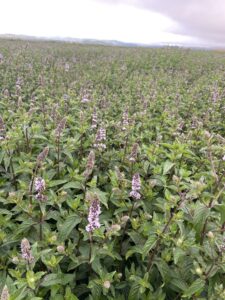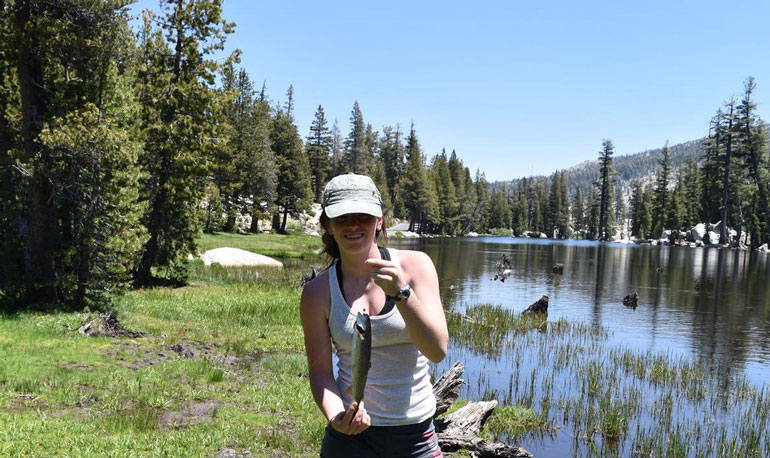My name is Caitie Smith I am a current senior at Oregon State University studying agriculture science and will be returning for my master’s in agriculture education this fall. During my internship at the Linn County Extension Office, I have learned so much and the time has just flown by. I am so grateful to everyone at the office that has welcomed me and made me feel at home throughout the summer.

I have mostly been working with Christy Tanner, assistant professor of practice and Extension field crops specialist, on several ongoing research projects throughout the summer. I wouldn’t be getting the full Linn County experience without doing some work with grass seed. So of course, one of the projects that took up the majority of our time involved assessing several grass seed fields for vole damage. This project was made easier with the use of multispectral images from a drone that allowed us to view the field from above. The most rewarding part of this project for me was being able to have a hands-on experience with several steps of the research process, from collecting samples to processing drone images and data.

Another project that I worked on with Christy was monitoring variegated cutworm and mint root borers in several mint fields throughout the mid-Willamette valley. Every Tuesday I drove to four different fields, collected data, and changed the pheromone traps that were used to attract mature moths. After this, I would make graphs with the data that would go into the weekly “Mint Pest Alert” newsletter.
I also worked with Elizabeth Records, a community horticulture and Master Gardener educator, and the Extension Master Gardener content team. Weekly I edited master gardener trainee’s blog posts before posting them alongside a few social media posts. Not only did I learn a lot about editing and posting blogs but I also learned a great deal from the blog posts themselves. The trainees did copious amounts of research on each of their subjects from weeding tools to maximizing your harvest’s nutrients.
Once again, I can’t thank the Linn County Extension staff enough for allowing me to make the most out of this opportunity. I am sure that this is not my last chapter working with extension and I am looking forward to ways that I can use the knowledge that I gained in my future endeavors.


 Hello everyone! My name is Brady Monteith, and I’m a sophomore at the University of Arizona, studying nutrition and food systems. Although I go to school Arizona, I grew up in Klamath Falls, Oregon. I’m back home for the summer, so I’m interning with the OSU Extension office in Klamath County. Klamath is a very ag-centric community, so I’ve grown up surrounded by agriculture. My family owns and operates a commercial farm, and my first job was to drive tractor and rake hay, so I’ve always felt quite connected to that side of the food system.
Hello everyone! My name is Brady Monteith, and I’m a sophomore at the University of Arizona, studying nutrition and food systems. Although I go to school Arizona, I grew up in Klamath Falls, Oregon. I’m back home for the summer, so I’m interning with the OSU Extension office in Klamath County. Klamath is a very ag-centric community, so I’ve grown up surrounded by agriculture. My family owns and operates a commercial farm, and my first job was to drive tractor and rake hay, so I’ve always felt quite connected to that side of the food system.

